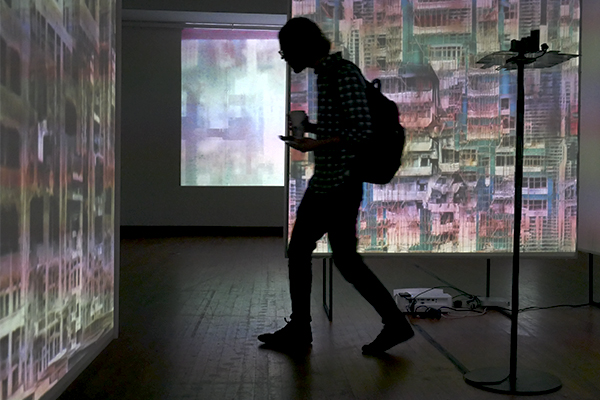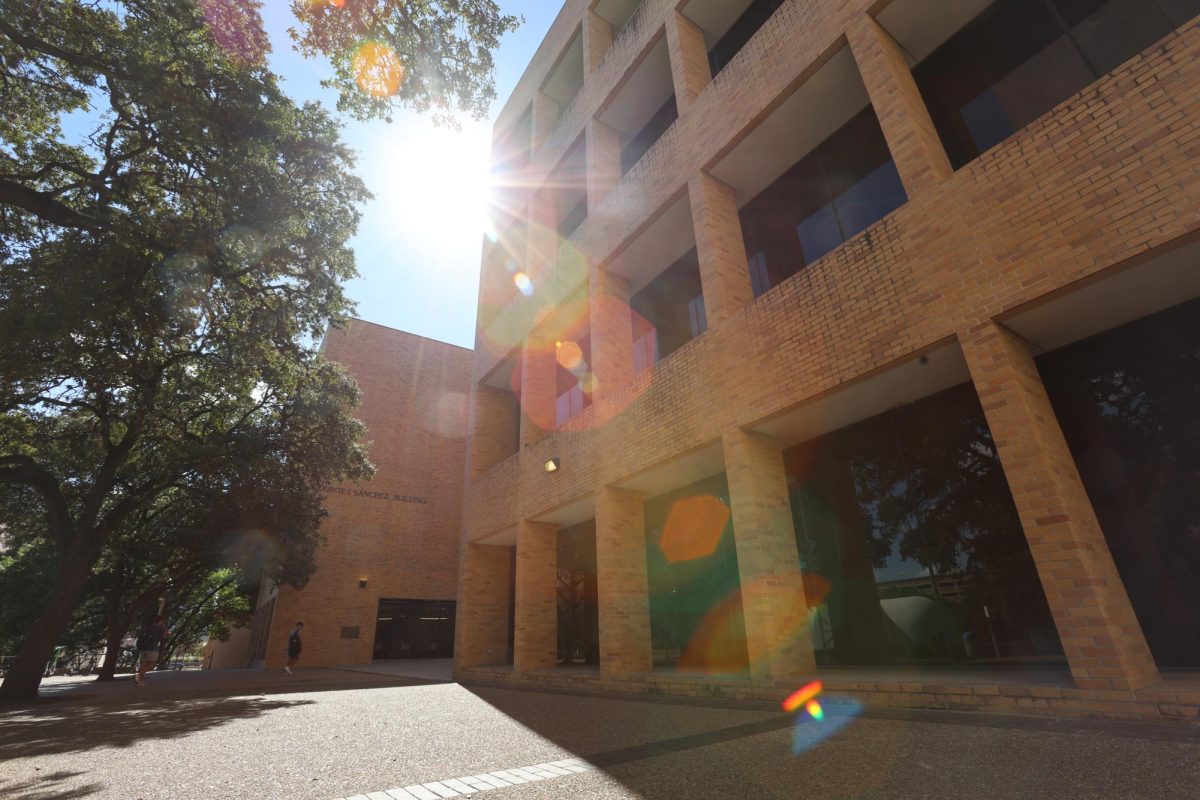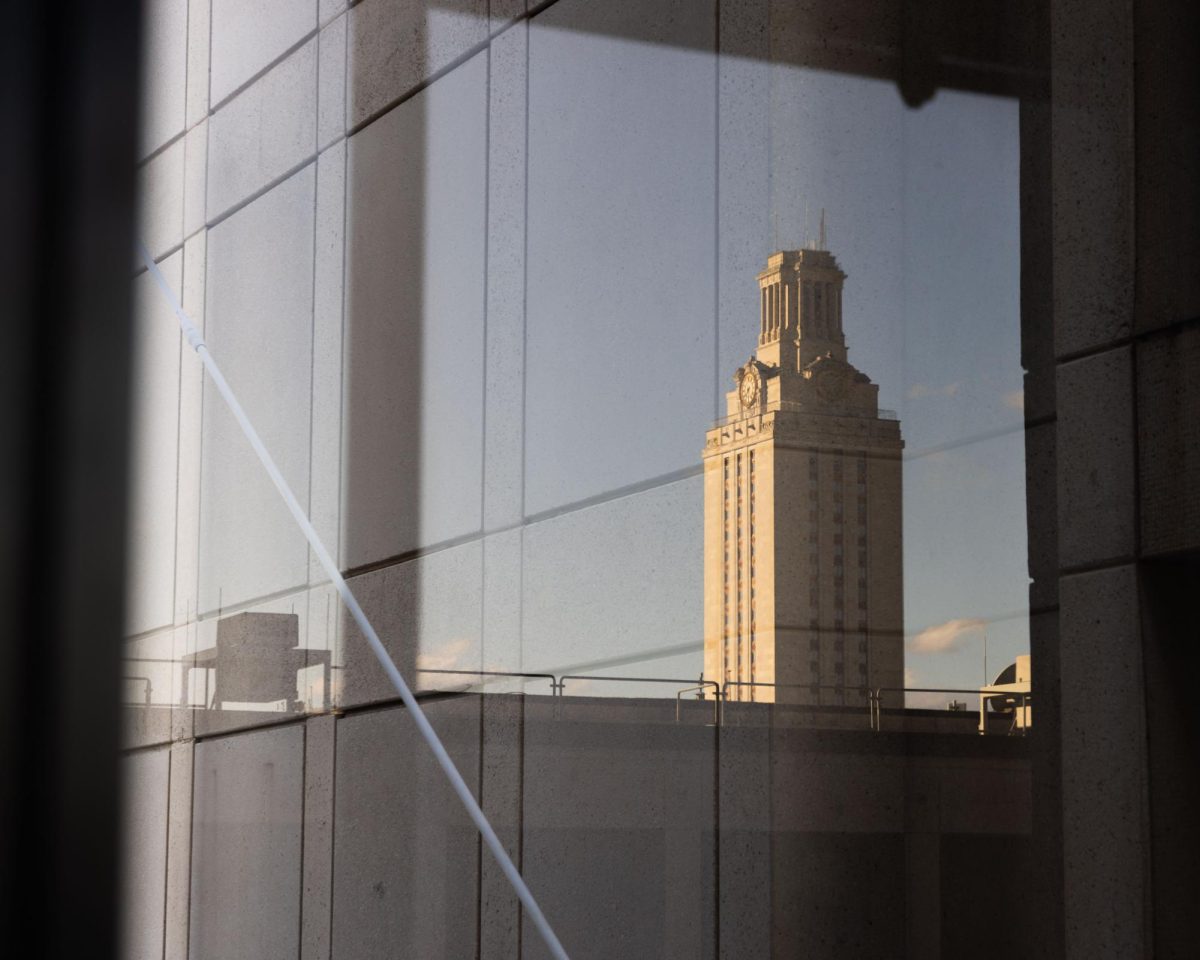Using artificial intelligence and augmented reality, the School of Architecture revealed Monday a gallery of projector screens that feature a simulation of infinitely tall city block designs.
Los Angeles-based design practice Ishida Rehm Studio opened the exhibit “Interface Architecture” in the Mebane Gallery in Goldsmith Hall. The exhibition will be on display until March 13 and is free and open to the public.
The studio works on projects related to architecture, product design, interactive media and data analysis. The co-founder of the studio, Casey Rehm, spoke about his work with AI and architecture before the opening in his lecture entitled “Complicit.” Rehm discussed the increasing prevalence of AI in architecture to create designs, such as the one in the display, which showed a pattern of buildings repeatedly generating.
“There is something absolutely overwhelming and exciting about a machine’s potential in the future of architecture,” Rehm said about the use of automated reality software in design.
Rehm said the profession is changing to be more geared toward automation and stressed the importance of learning AI as an architecture student.
When asked their opinion of this notion, professors in the School of Architecture agreed on the value of the skills Rehm specializes in.
“It is becoming more and more important to talk about how automation impacts all fields of work,” said Kory Bieg, an associate professor and graduate advisor for the School of Architecture. “By thinking about these things, we can actually direct how we think about computers to make a more productive and positive impact in the world.”
Following the lecture, guests witnessed the opening of Rehm’s exhibit.
“(This display involved) creating a fictionalized space by consuming architectural imagery and then putting it into an impossible configuration of endlessly looping vertical stacks that make up an infinite city block,” Rehm said.
The project was designed using neural networks, an AI technology designed to recognize and replicate patterns, to automate an architectural configuration, such as a building. This technology is becoming an important part of how students learn architecture.
“I am excited to learn from this by seeing other professionals and how they are using these technologies in architecture and how it could be relevant in my future,” architecture senior Elle Brauchle said. “AI is potentially where the world is going and architecture is behind in that realm. It will hopefully catch up.”





















